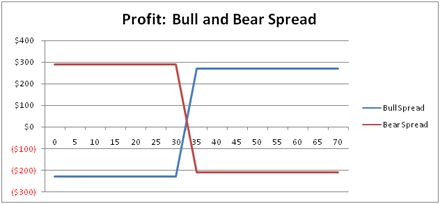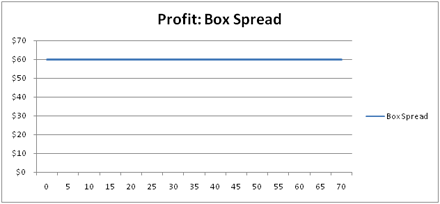Business Finance
Investment Strategies: Box Spreads
Written by Gregory Steffens for Gaebler Ventures
Through different combinations of call and put options, equity investors hedge particular risks associated with their investment portfolios. Money spreads allow investors to profit from certain movements of a stock's price while limiting their amount of exposure. One specific type of money spread involves box spreads which combine put and call options to earn risk-free profits. This article will introduce box spreads, how they are created, and how investors profit from their designs.
Box spreads are an option strategy that combines a bull spread and a bear spread having two different exercise prices, which produces a risk-free profit of the difference in the premium prices.
Given the efficient theories of option pricing, box spreads should not be able to earn abnormal returns. The premium prices for call and put options should be priced so that an investor will realize profits equal to the risk-free rate of the market.
However, this is not always the case. Although relatively rare, arbitrage opportunities do exist in various areas of the market in random instances. If such an arbitrage opportunity is discovered, box spreads offer a way for an investor to capitalize on the occasion.
Below, the profit potentials for a bull spread and a bear spread are shown. To create the bull spread, an investor would purchase a call option with a $30 strike for $580 and sell a call option with a $35 strike for $350. For the bear spread, an investor would sell a put option with a $30 strike for $350 and purchase a put option with a $35 strike for $560.
Notice that, because of the different premium prices demanded for the options, the spreads are not mirror images of each other. This is indicative of a possible arbitrage opportunity.

The chart below combines the profit figures for the bull and bear spreads and illustrates the profit potential for a box spread. Despite any movement in the stock price of the underlying asset, the investor realizes a $60 profit. Considering the total cost of the strategy was $440, a risk-free profit of $60 would be an acceptable 13.6% return. This return becomes even more attractive since the options used to create the box spread could expire in as short as one month.

However, because they offer risk-free profits to the investor, arbitrage opportunities like the one above are very rare.
Far more likely, the investor will discover that the profit from a box spread strategy will be equal to the risk free rate of a ten year U.S. treasury bond. Moreover, actual returns can be lowered through transaction costs and taxes.
All these issues need to be evaluated and compared against other potential opportunities before one executes such a strategy. More often than not, other investment alternatives will be more profitable. But, if an investor is skillful or lucky enough to discover an arbitrage situation, he or she should exploit it until the option prices fluctuate back to their efficient points.
Gregory Steffens is a talented writer with a strong interest in business strategy and strategic management. He is currently completing his MBA degree, with an emphasis in finance, at the University of Missouri.
Share this article
Additional Resources for Entrepreneurs

Conversation Board
Questions? Comments? Suggestions? Share your thoughts on investment strategies and box spreads.